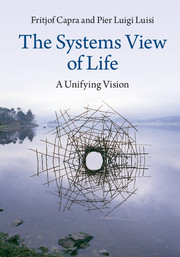Book contents
- Frontmatter
- Dedication
- Contents
- Preface
- Acknowledgments
- Introduction Paradigms in science and society
- I The mechanistic worldview
- 1 The Newtonian world-machine
- 2 The mechanistic view of life
- 3 Mechanistic social thought
- II The rise of systems thinking
- III A new conception of life
- IV Sustaining the web of life
- Bibliography
- Index
3 - Mechanistic social thought
from I - The mechanistic worldview
Published online by Cambridge University Press: 05 April 2014
- Frontmatter
- Dedication
- Contents
- Preface
- Acknowledgments
- Introduction Paradigms in science and society
- I The mechanistic worldview
- 1 The Newtonian world-machine
- 2 The mechanistic view of life
- 3 Mechanistic social thought
- II The rise of systems thinking
- III A new conception of life
- IV Sustaining the web of life
- Bibliography
- Index
Summary
Birth of the social sciences
While Descartes himself has sketched the outlines of a mechanistic approach to physics, biology, and medicine, the thinkers of the eighteenth century carried this program further by applying the principles of Newtonian mechanics to the study of human nature and human society. In doing so, they created a new branch of science, which they called “social science” (later changed to the plural “social sciences” to denote a variety of disciplines outside the natural sciences). This new science generated great enthusiasm, and some of its proponents even claimed to have discovered a “social physics.”
The Newtonian theory of the universe and the belief in the rational approach to human problems spread so rapidly among the middle classes of the eighteenth century that the whole era became known as the “Age of Enlightenment,” or the “Age of Reason.” The dominant figure in this development was the philosopher John Locke (Figure 3.1), whose most important writings were published in the late seventeenth century. Strongly influenced by Descartes and Newton, Locke's work had a decisive impact on eighteenth-century thought.
- Type
- Chapter
- Information
- The Systems View of LifeA Unifying Vision, pp. 45 - 60Publisher: Cambridge University PressPrint publication year: 2014



